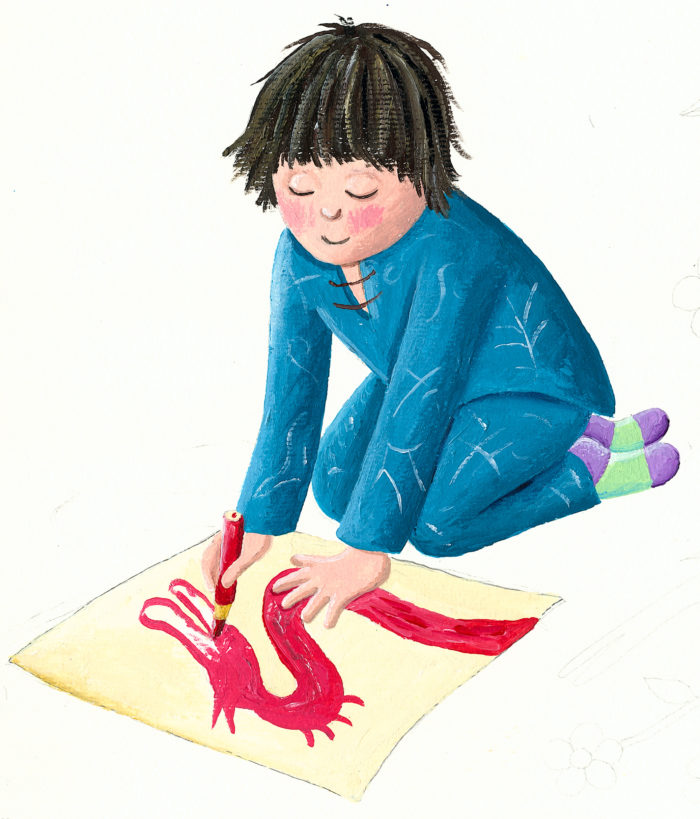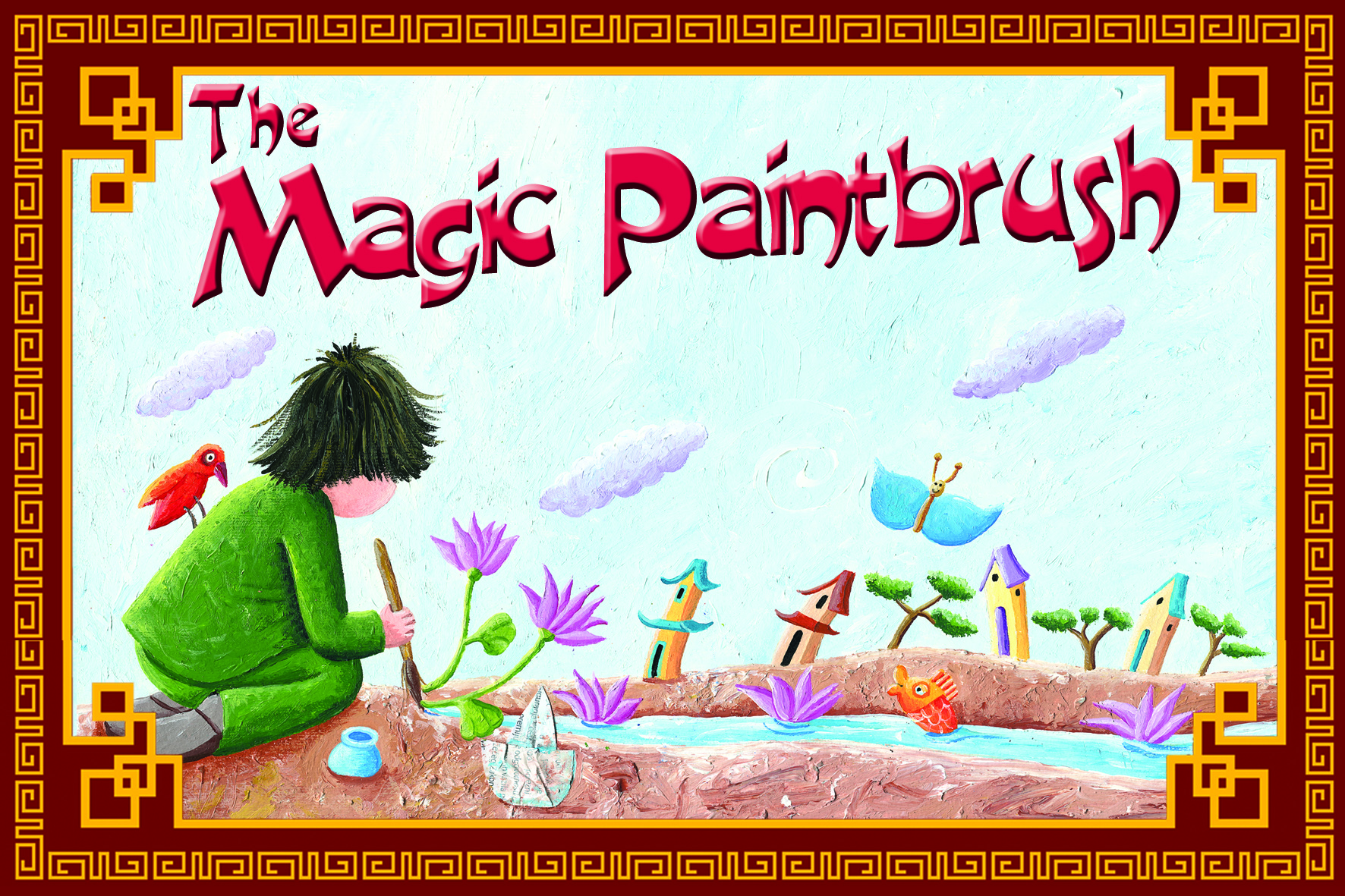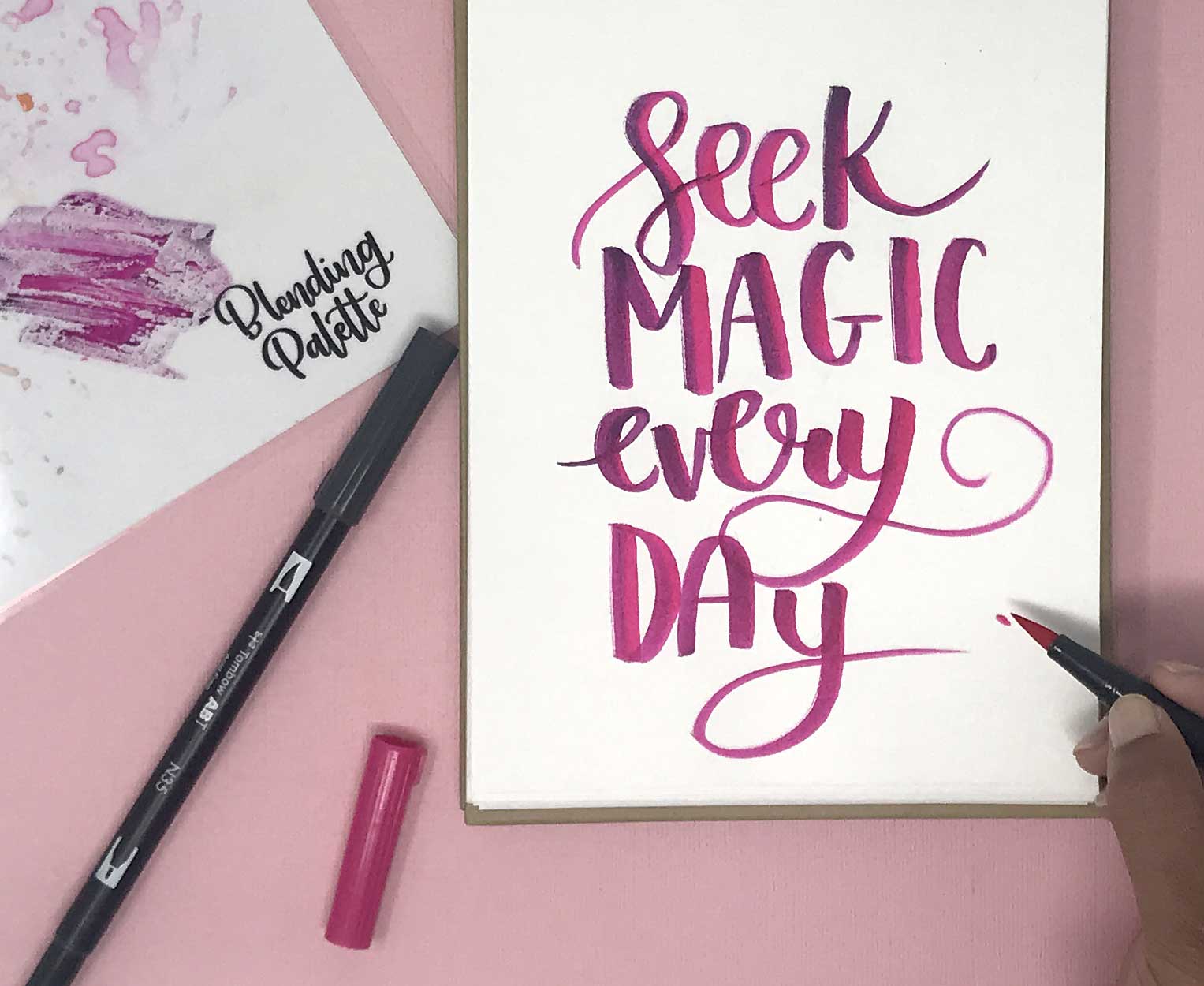



We bought this book when Katie was 2 years old and I think she was too young for it then, she would listen to it and look at pictures, but I don't think she had much of an understanding of the story. I also like the attention paid to other aspects of the graphics: Chinese-looking pictographs in place of page numbers, simple, modern and very appealing font used to print the text, the lining of the covers made in brownish-red paper looking like the texture of the hand made paper might possibly look. I loved the Emperor, the horses and the dragon! The emotional expressions of most characters are variable and rendered very well, while Shen maintains a serene, semi-smiling countenance throughout. There is, however, enough detail and descriptiveness in the pictures to make them engaging even for a small child. I really liked the illustrations, and though they don't have the cartoonish character and humour of the Scheffler ones, they have magical quality that is able to evoke the far-away and the long-ago as all proper fairy tale illustrations should. The illustrations are by Joel Stewart (he also illustrated Carol Ann Duffy's books for children Moon Zoo and Underwater Farmyard) and they are a perfect complement to the text: done in subtle but evocative watercolour and Indian Ink, finished on computer (no, I couldn't tell that, I looked it up on .uk), with a definite Chinese touch. There is descriptive statements as well as rhetorical questions and answers, a bit of dialogue too, and all of it gets incorporated into the text without any straining, with the lightest touch. I loved the rhyme, it felt very easy but not simplistic or childish with fantastic rhythm and almost musical (singing?) quality to it. The story is told in rhyme, but it's not the couplet type of rhyme with slightly alternating repetitions encountered in Donaldson/Scheffler books the Magic Paintbrush offers an altogether more epic story told in a more grown-up way. Will she get out? Will she defend her village from the Emperor's wrath?

Eventually, the Emperor hears of her and her magic brush and orders her to paint him a tree growing coins. And so she does, painting first the supper for her family, and then things of necessity for the villagers. But the brush comes with a warning: she is never to paint for wealthy folk, and only for the poor. A mysterious man gives her a magic paintbrush: everything painted with the brush will come to life. Shen, a girl from a poor Chinese village, draws pictures in the sand when send by her family to gather oysters for supper. Magic Paintbrush retells an old folk story and does it well indeed. It is, however, a wonderful one and to be honest, I personally like it better than the other ones, though there isn't really much comparison to be made as their intentions and styles are different. Magic Paintbrush is also a Julia Donaldson's book, and it's also written in rhyme as most of her others, but it's not illustrated by Axel Scheffler and it's a different kind of book. If you have a child of pre-school or early school age it's likely you would have at least heard of Julia Donaldson, who, in her partnership with the illustrator Axel Scheffler has created several best-selling books for young children, including the most popular Gruffalo which spawned a true cult. Highly recommended for children aged 4 to about 9, and parents should enjoy it too. Summary: This book offers rhymed retelling of a traditional Chinese folk story perfect for reading aloud, with beautiful illustrations and strong message about greed and artistic responsibilities.


 0 kommentar(er)
0 kommentar(er)
